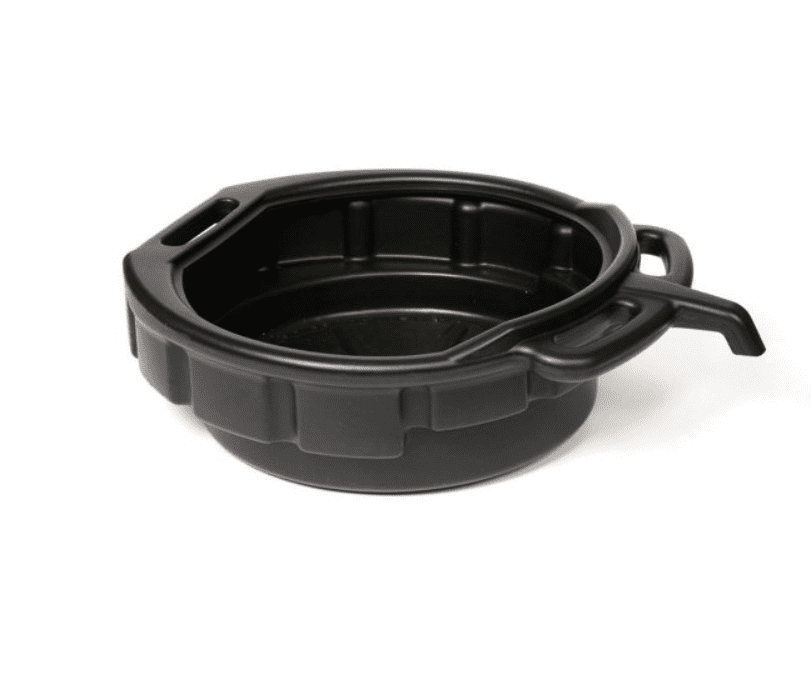
This blog is for those who have ever wanted to learn how to change the oil in their lawnmower. In this post, we will be discussing everything you need to know to properly change the oil.
First, you will need to determine the type of oil your lawnmower uses. There are three main types of oil: hydraulic, mechanical, and pneumatic. Furthermore, each has its own specific needs when it comes to changing the oil.
Only if you know which type of oil your lawnmower uses, can you know what type of oil you need to change the oil. If you don’t know, then you need to call your dealer and ask.
How To Change Oil in Lawnmower?
- Warm up your engine, and get all the tools and equipment you need
- Remove the oil filter and drain the oil
- Fill the Oil of your lawnmower with the right type of lubricant to the desired level
- Clean up the excess oil and allow it to run for a few minutes
Finally, If you’re looking for a complete guide to these steps, you’ve found it. Here’s a complete guide to the steps above. you should stay tuned to this article as we provide you with the information you are searching for in straightforward language.
Steps to Change Lawnmower Oil:
Finally, you should follow the steps provided in the manual to do the job. It provides a detailed step-by-step procedure and also precautions to be taken care of while doing the job.
Step1: Preparation for an oil change
Preparation for an oil change is to make sure that you have the correct oil. You should read the manual that comes with your lawnmower to know the type of oil you need.
● Run your engine for a while:
Firstly, to prepare the lawnmower, you need to check if the engine has been started. If it has not been started, you need to do that first (preferably for 15 minutes). because if your engine warms up Resultantly the oil moves more easily, and the draining process becomes easier.
● Clean the oil fill area:
Equally important, you need to clean the oil fill area after the engine started. You need to clean the area after the oil changes because the oil will collect dirt and dust, which could clog the oil filter. To clean the oil fill area, use a rag or sponge and clean the area around the oil fill area.
● Prepare an oil pan to catch the oil
To prepare the oil pan, you need to drain the oil. To do this, turn off the engine and open the hood. Remove the oil pan, and drain the oil into the oil pan.

Step 2: Drain the used oil
● Remove your spark plug:
To drain the oil, you need to remove the spark plug. To do this, turn off the engine, and it’s for your safety because during the oil changing engine accidentally starts up (most probably when the blades are rotated).
● Perform oil drainage:
We divided Perform oil drainage into three different methods for your better understanding :
Method 1: Tilt Method:
In this method, you tilt your lawnmower towards the side so that your air filter points upward. Then you open the oil cap and let all the oil drain out into the pan. Be careful you do not touch the hot oil as it is very hot and will burn your skin.
Method 2: Using oil drainage plug:
In this method, you tilt your lawnmower towards the side so that your air filter points upward. Then you open the oil cap and let all the oil drain out into the pan. Be careful you do not touch the hot oil as it is very hot and will burn your skin.
Method 3: siphon method:
A siphon pump is used in In this method, These pumps have a built-in tank from which the oil is drained into another container for disposal. Likewise, you should manually suck the oil out by pressing/pulling the piston. It’s a lot cleaner and more efficient way of oil drainage than the traditional method of pouring oil down a drain.
Step 3: Addition of fresh oil:
Once you have purchased the right kind of oil for your lawnmower,
At the same time, you should follow the manual to add the new oil and add the oil slowly to avoid any damage to the engine.
You should add a certain amount of oil to your lawnmower. Add oil to the oil pan to the desired level. Then turn the engine back on and let it run for a few minutes.
Due to the use of oil may you feel, that your mower backfires sometimes. if You notice that here is the solution for it.
Step 4: cleaning up the work area:
Finally, you’ve added the fresh oil to your mower, leave it up for 5 minutes. The oil will settle.
At the same time, Recharge the batteries, check the tires and replace your oil dipstick.
Moreover, the next step is to reconnect the spark plug wire and remove the plastic bag around the fuel cap.
Finally, it is a good idea to clean up the work area after the oil change. To prevent dirt and oil from getting onto the carpet, rugs, or other surfaces clean the working area. Use a rag or sponge to wipe to clean the remaining dirt or oil.
Conclusion:
In conclusion, the best way to get the job done is to first figure out what needs to be done. Then, you need to gather all the tools and supplies that you will need. Next, you need to get the engine off and remove the oil pan. It’s a good idea to check the oil level before you start. If you find that the oil is low, add more oil to the pan. If it’s high, drain some of the old oil and replace it with new oil. After you’ve drained the old oil, you can refill the pan. Make sure that you’re using the right type of oil for your lawnmower. Finally, use a filter to keep the dirt and debris out of the oil. If you’re not sure how to do this, take a look at our article on How to Change Oil in a Lawnmower.
Frequently Asked Questions:
Answer: If you forget to change the oil, the engine will start burning oil. This will damage the engine and reduce engine life.
Answer: Formerly You can check the oil level by looking at the dipstick. You should remove the dipstick and insert it into the oil filler opening. If the oil level is low, the dipstick will come out with oil on it.
Answer: SAE 30- Most common oil used in any lawnmower and some lawnmower use 10w-30 or10w-40 oil as recommended in their user manuals, It is best to use these types of oils in lawnmowers
Answer: An SAE 30 viscosity value is a high-performance engine oil with high viscosity values. These ratings are generally from 0 to 50. The viscosity refers to the thickness of the oil or its ability to flow. Colder weather means a thinner oil (with lower viscosity) is more effective for you. Unlike thin oils, thick oils are used when the temperatures are high.SAE-30 is a single-grade oil that is thick as compared to other oils. A wide range of engine sizes has been made to fit these purposes and to meet the requirements of the different industries. Some motor oils are multi-grade, and most can perform in all seasons.
Answer: There are two different design options for lawnmower engines, namely, 2-stroke and 4-stroke.
In a 2-stroke engine design, the entire cycle of combustion and power is completed in the crankshaft rotation.
In a 4-stroke engine, it takes two revolutions of the crankshaft for the whole cycle to complete.
Since there is no separate reservoir for oil in the 2-stroke engine, the gasoline and oil are mixed together. As compared to a conventional engine, a 4-stroke engine requires an oil reservoir to lubricate the connecting rods and crankshaft thoroughly.
Leave a Reply